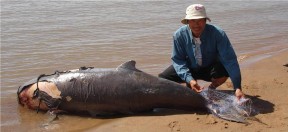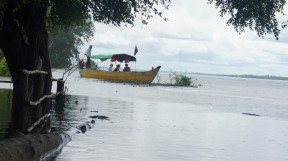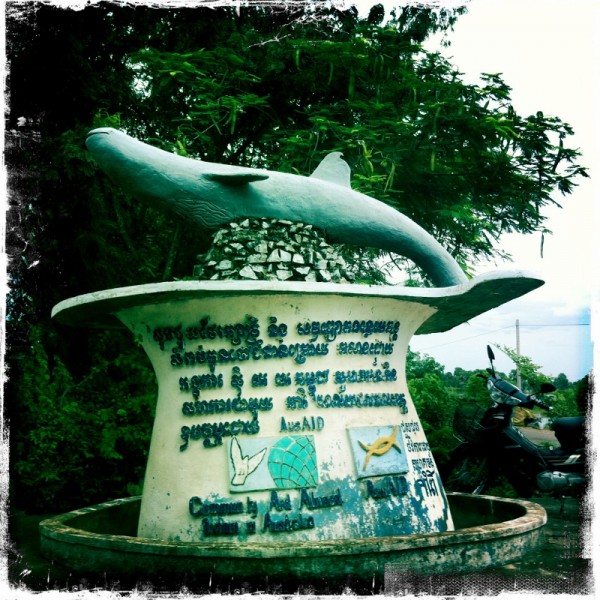One of the only reasons tourists may stop in Kratie, North of Cambodia, is to see the Irrawaddy dolphin that – as it’s not obvious from its name – inhabits the Mekong river. Many cafes and guesthouses propose half-day trips to watch dolphins in Kampie, 15 km North of town. Some even insist that it may be the “last chance” to see the “highly endangered dolphin” using their rarity as a commercial argument to attract visitors.

Indeed, WWF recently reported that there are only 85 dolphins left in the Mekong (including the only 8-9 individuals remaining in the Laos-Cambodia transboundary pool). But the Cambodian Government refuses this figure and claims there are more than 200 dolphins and that the population is just fine.
But it is not. Very few calves are surviving to adulthood – probably due to a combination of threats such as environmental contamination, entanglement in gillnets (bycatch) and destructive fishing practices (poison, dynamite). Furthermore, since the last survey, it appears that the population is declining. 85 individuals is a very low figure and the limited genetic diversity makes the population even more vulnerable to the above-mentioned threats.

The fact that the Cambodian Government does not take the adequate measures that are urgently needed (i.e. for the least banning destructive fishing practices and allowing further investigation on the cause of calves death) is discouraging. This blind denial will have severe consequences not only for the dolphins but for the poor communities who count on dolphins to raise their income through dolphin-watching trips, selling derived products such as handicrafts and souvenirs and opening restaurants and homestays.
VB
